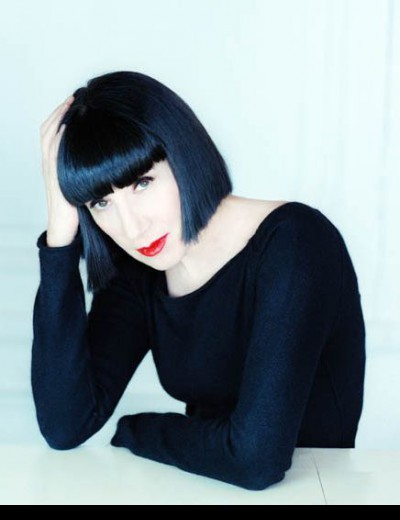the designers
Chantal Thomass was born in Paris, France, in 1947.
Thomass had no formal training in fashion design, but as a child, dressing up proved enough of a motivation for her to design her own clothes, which were made by her mother. She began her fashion career at 18, designing clothes for girls of her own age. A year later, she married Bruce Thomass, who had studied at the École des Beaux Arts in Paris. Together they formed a small fashion company called Ter et Bantine manufacturing and selling young and unusual clothes. They created dresses from hand-painted scarves, designed by Bruce, and succeeded in selling them to Dorothée Bis. Thomass also designed dresses with flounced pinafores, schoolgirl collars, and balloon sleeves that were sold from their first boutique on Boulevard Saint Germain in 1967. Actress and French cultural symbol Brigitte Bardot became a regular customer, as did designer Jacqueline Jacobson, who ordered over a hundred dresses in one season alone.
Show Full
In 1967, she sold dresses made from handpainted scarves to the store Dorothee Bis.
The business was sufficiently successful for the pair to found the Chantal Thomass label in 1975, with Chantal as creative director and Bruce as licensing and sales director. As the profile of the company rose, so did the price of the clothes, although they retained their young, enchanting, and highly feminine style. Thomass has often been motivated by the progression of her own life. Her pregnancy in 1981 led her to develop a line of maternity clothes. As her daughter began growing, Thomass developed a childrenswear division that retained many of the distinctive and theatrical elements of her mainline collections.
The company moved into licensing in 1985, joining forces with the Japanese group World as a financial partner. Licensed products were available throughout Europe and Japan and included fine leather goods, tights, women's shoes, eyewear, watches, children's ready-to-wear, scarves, lingerie, and swimwear. There were soon a dozen Thomass boutiques throughout France.
Thomass retains her eminence by reflecting fashion changes and adapting her look to suit the prevalent mood. A youthful feel to her clothes has kept her in the forefront of leading Paris-based designers. Yet the mid-to late 1990s were a turbulent time for Thomass. In 1995 she was fired from her own label, of which she owned a minority interest, in a dispute with Japanese majority owner World Company. World planned to continue the label, publicizing aggressive expansion plans, and released further designs, which were considered more commercial than Thomass' typical work. A year later, however, the label went into bankruptcy and liquidated its assets.
Thomass, meanwhile, stopped designing lingerie for a time, leaving the category that had become her main focus. She spent the next four years as a consultant to companies such as Austrian hosiery maker Wolford (where she designed a swimwear line), Victoria's Secret, Antinéas, and Rosy, often in categories outside lingerie.
In late 1998 after a lawsuit against World was resolved, Thomass reacquired the rights to her name and found a backer, the Dim division of Sara Lee, which took a two-thirds ownership of her company and assumed manufacturing duties for the core lingerie lines. Her first products under the relaunch were available in 1999. Her reentry into lingerie design was marked by controversy when a Galeries Lafayette window display featuring live models wearing her lingerie drew protests from feminists and other groups in Paris.
Among the best-known designers in France—a retrospective of her work at Marseille's Musée de Mode in 2001 included 230 pieces—Thomass also has a strong business in Japan and began her entry into the U.S. market in the late 1990s and early 2000s, with her first Saks Fifth Avenue trunk show taking place in April 2001. Licensed lines, distributed primarily in Europe and Japan, include eyewear, among other categories.
